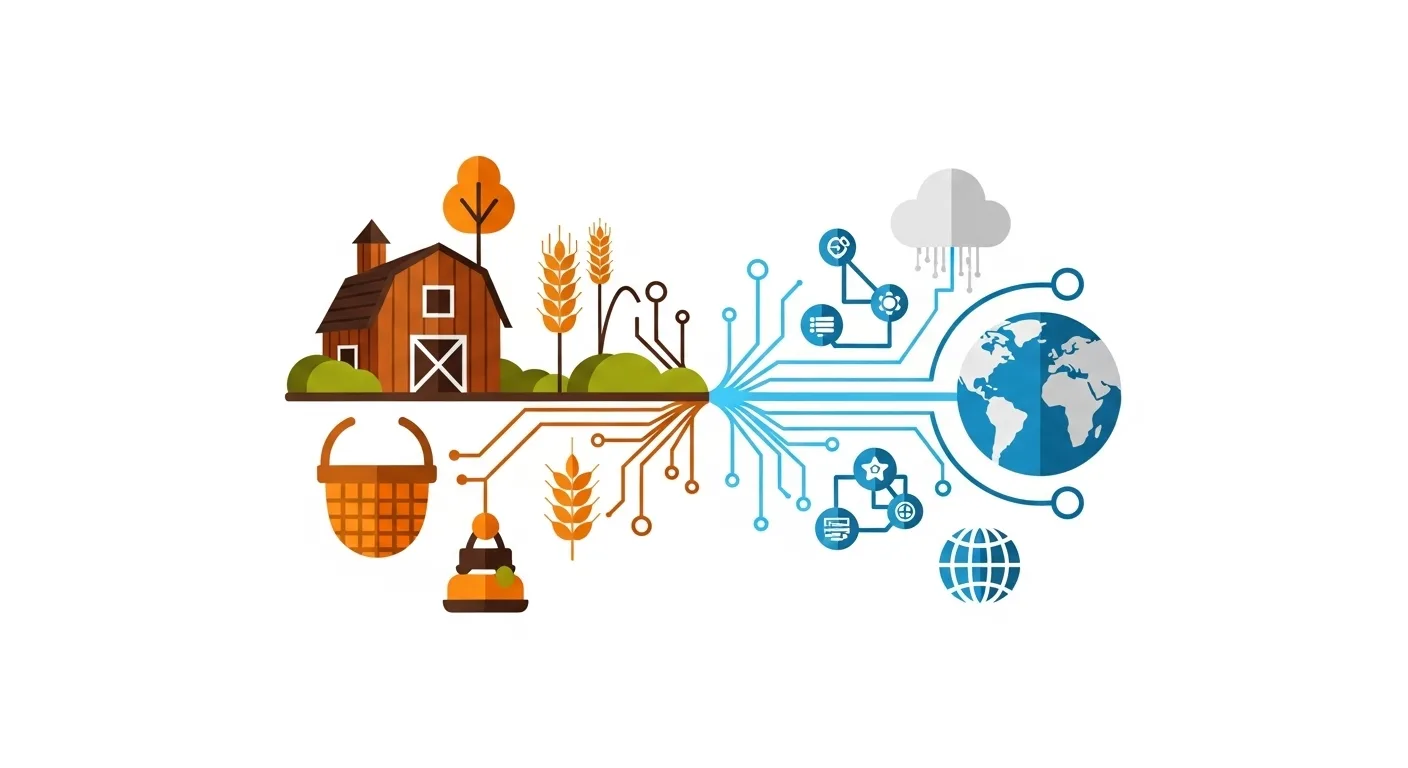For centuries, local production has been both a source of livelihood and a form of cultural existence for rural communities. This system—where seeds are preserved, production races with the seasons, and sales take place in village markets or local shops—has built a strong tradition through its simplicity and sustainability. However, in the age of digitalization, this local chain is no longer defined solely by geographic boundaries. Now, a product made in a village can reach global markets through a digital storefront. In short, the concept of “local” is being rewritten.
From Small-Scale Producer to Global Consumer: Shifting Dynamics
The fact that a homemade tomato paste, soap, or cheese crafted by a village producer can now reach not just a neighbor but a customer in Tokyo is a sign of a significant transformation. This shift is not only technological but also brings about economic, cultural, and social restructuring.
How has this digital transformation become possible?
- The proliferation of e-commerce infrastructure: Accessible platforms (Etsy, Trendyol, Amazon Handmade, etc.) have opened digital storefronts for SMEs and individual producers.
- Brand-building through social media: A jam made by a village woman can now gain a loyal customer base via Instagram.
- Digital payment systems and logistics solutions: End-to-end secure shopping experiences have turned small producers into global players.
- Global consumer trends: The demand for natural, handmade, additive-free, and local products has connected urban consumers with rural producers.
Cultural Heritage Reborn on Digital Platforms
Local production is not just an economic activity; it is also a carrier of cultural memory. The scent of handmade soap, the bitterness of traditional olive oil, or a rug woven with local patterns are ways of connecting with the past. The presence of these values on digital platforms offers not only sales opportunities but also a chance for cultural transmission.
At the same time, this digitalization enables the revival of traditional production techniques that were at risk of being forgotten. Younger generations are combining their ancestors’ production knowledge with modern digital tools, rooting themselves in the local while finding a place in the global market.
The Resilience and Solidarity of Local Networks
Digital transformation encourages local producers to act not only individually but also as communities. Village cooperatives, women’s producer unions, and agricultural initiatives can now create their own digital brands, develop marketing strategies together, and gain visibility collectively.
This leads to:
- Increased bargaining power,
- Reduced intermediary chains,
- Fairer income distribution,
- The development of a solidarity-based economic model.
This process plays a transformative role, especially for women producers, in terms of economic independence and visibility.
Challenges and Opportunities
Like any transformation, this process comes with challenges. Issues such as digital illiteracy, inadequate internet infrastructure, sustainable packaging, and logistics costs are among the problems local producers must address.
However, with the right support mechanisms (local government support, digital training programs, e-commerce consultancy, etc.), these challenges can turn into opportunities. Collaboration between public institutions, NGOs, and the private sector not only strengthens rural areas but also enhances the resilience of the national economy.
Digital: The New Language of the Local
Today, a product born in a village is no longer just traditional; it carries the ambition of being modern, accessible, and global. The digital transformation of local production is not merely about expanding sales channels; it is about making the story, labor, and value of the local more visible. This journey from village to global carries the scent of the soil, the trace of labor, and cultural diversity through digital networks. And this transformation offers hope not only for the future of rural areas but for the world as a whole.


